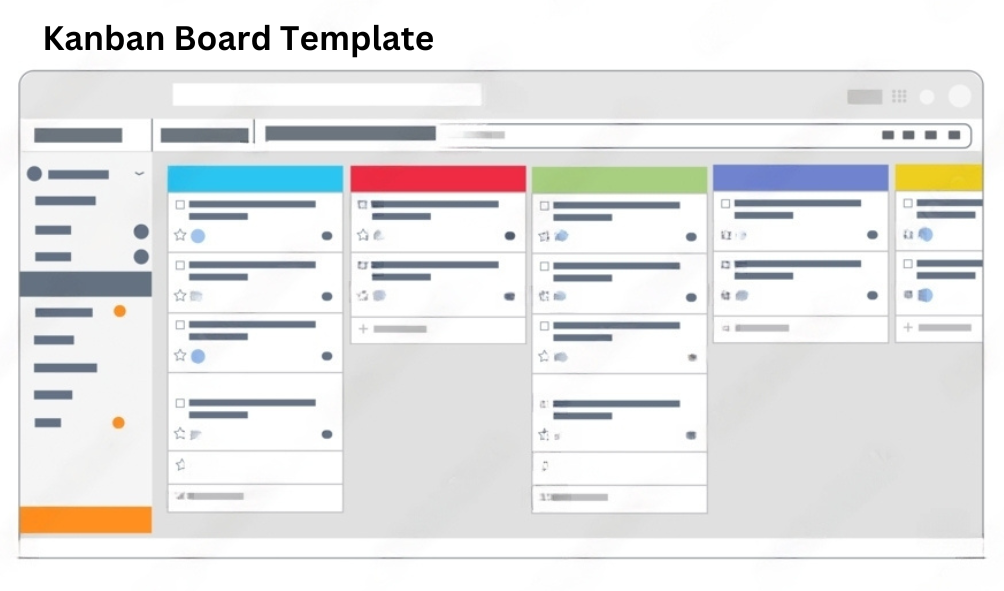In today's fast-paced business environment, organizations are constantly seeking ways to streamline operations, improve efficiency, and enhance collaboration among teams. One of the most effective tools for achieving these goals is the digital Kanban board. Originally developed as part of the Lean manufacturing methodology, Kanban boards have evolved into versatile digital platforms that can be adapted to a wide range of industries and workflows.

The Basics of Kanban Boards
Kanban, a Japanese term meaning "visual signal" or "card," is a visual workflow management tool that helps teams visualize their work, limit work-in-progress (WIP), and optimize flow. A typical Kanban board is divided into columns representing different stages of a process, such as "To Do," "In Progress," and "Done." Tasks are represented by cards that move across the board as they progress through the workflow.
Digital Kanban boards take this concept further by offering features such as real-time collaboration, automation, analytics, and integration with other tools. These boards can be accessed from anywhere, making them ideal for remote teams and organizations with distributed workforces.
How Digital Kanban boards Optimize Workflows
1. Visualizing Workflows
One of the primary benefits of a digital Kanban board is its ability to provide a clear and visual representation of a workflow. By mapping out each step of a process, teams can easily see where tasks are at any given moment. This visibility helps identify bottlenecks, monitor progress, and ensure that work is evenly distributed among team members.
For example, a software development team might use a Kanban board to track the progress of tasks such as coding, testing, and deployment. By visualizing these stages, the team can quickly spot any delays or issues and address them before they become major problems.
2. Limiting Work-in-Progress (WIP)
One of the core principles of Kanban is limiting WIP, which refers to the number of tasks that are actively being worked on at any given time. By setting WIP limits, teams can prevent overloading any single stage of the workflow and ensure that tasks move smoothly from one stage to the next.
Digital Kanban boards make it easy to enforce WIP limits by automatically flagging when a column exceeds its maximum capacity. This encourages team members to focus on completing existing tasks before starting new ones, leading to faster turnaround times and reduced stress.
3. Enhancing Collaboration
Digital Kanban boards are designed to facilitate collaboration among team members. Features such as real-time updates, comments, and notifications ensure that everyone is on the same page, regardless of their location. Team members can easily communicate about tasks, share files, and provide feedback directly within the board, reducing the need for lengthy email chains or meetings.
Additionally, digital Kanban boards can be integrated with other tools such as project management software, messaging platforms, and time tracking apps. This integration creates a seamless workflow where all relevant information is accessible in one place, further enhancing collaboration and efficiency.
4. Driving Continuous Improvement
Continuous improvement is a key component of the Kanban methodology. Digital Kanban boards support this by providing analytics and reporting features that help teams monitor performance and identify areas for improvement. Metrics such as lead time, cycle time, and throughput can be tracked to assess how efficiently tasks are moving through the workflow.
For instance, if a team notices that tasks are consistently getting stuck in the "In Progress" column, they can investigate the root cause and implement changes to address the issue. Over time, these small adjustments can lead to significant improvements in overall productivity and workflow efficiency.
5. Adapting to Changing Needs
One of the strengths of digital Kanban boards is their flexibility. Teams can easily customize their boards to fit their specific workflows and adapt them as needs change. Columns, swimlanes, and cards can be added or modified to reflect new processes, priorities, or project requirements.
This adaptability is particularly valuable in dynamic environments where workflows are constantly evolving. Teams can quickly pivot and make adjustments without disrupting the entire process, ensuring that they remain agile and responsive to changing demands.
Conclusion
Digital Kanban boards are a powerful tool for optimizing workflows, improving efficiency, and fostering collaboration in any organization. By providing a visual representation of work, limiting WIP, enhancing communication, driving continuous improvement, and offering flexibility, these boards enable teams to work smarter, not harder. Whether you're managing a small team or overseeing a large project, incorporating a digital Kanban board into your workflow can lead to significant gains in productivity and overall success.
As businesses continue to navigate the complexities of the modern work environment, the adoption of digital Kanban boards is likely to become increasingly common. By embracing this tool, organizations can position themselves for long-term success in an ever-changing landscape.